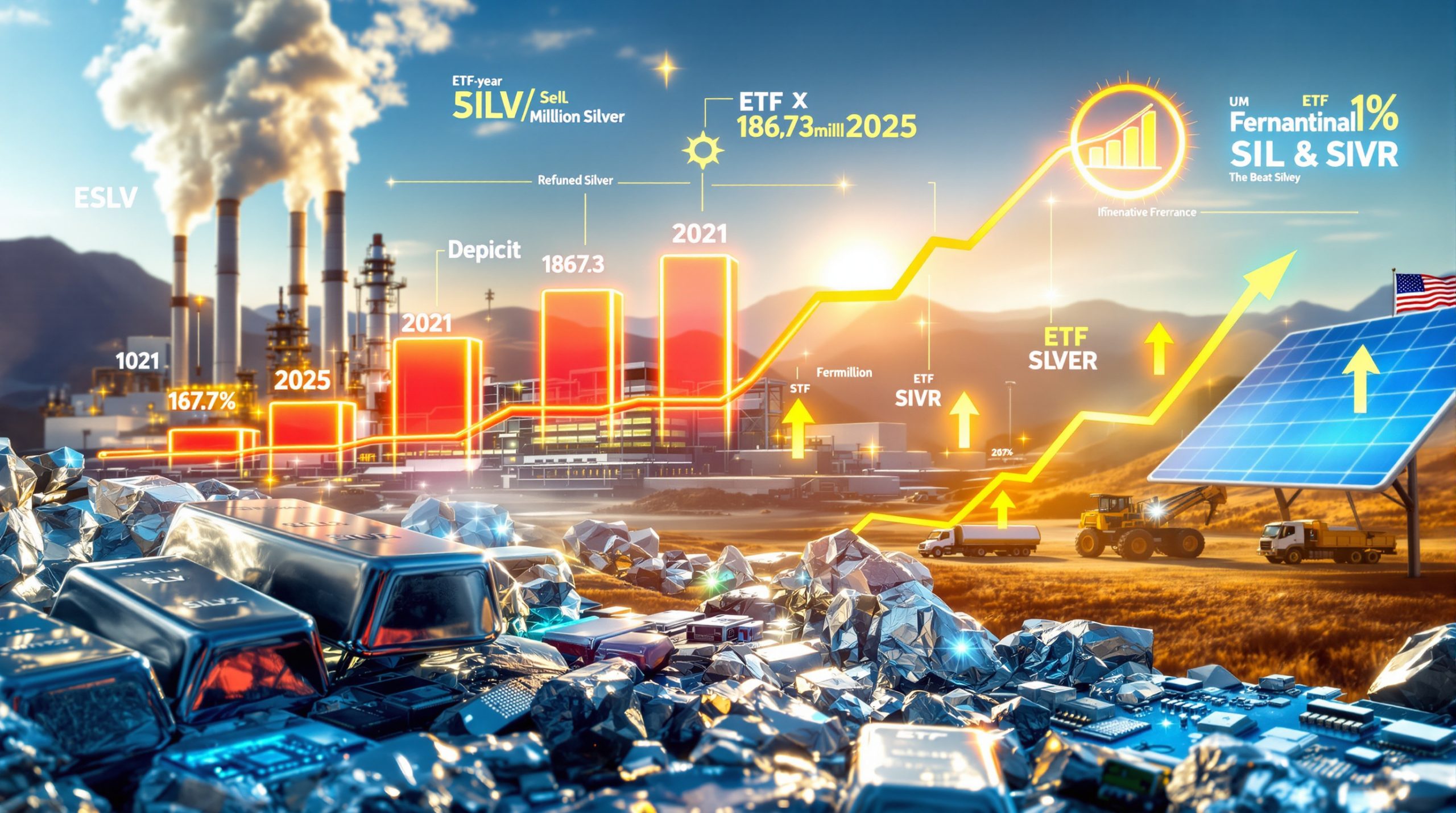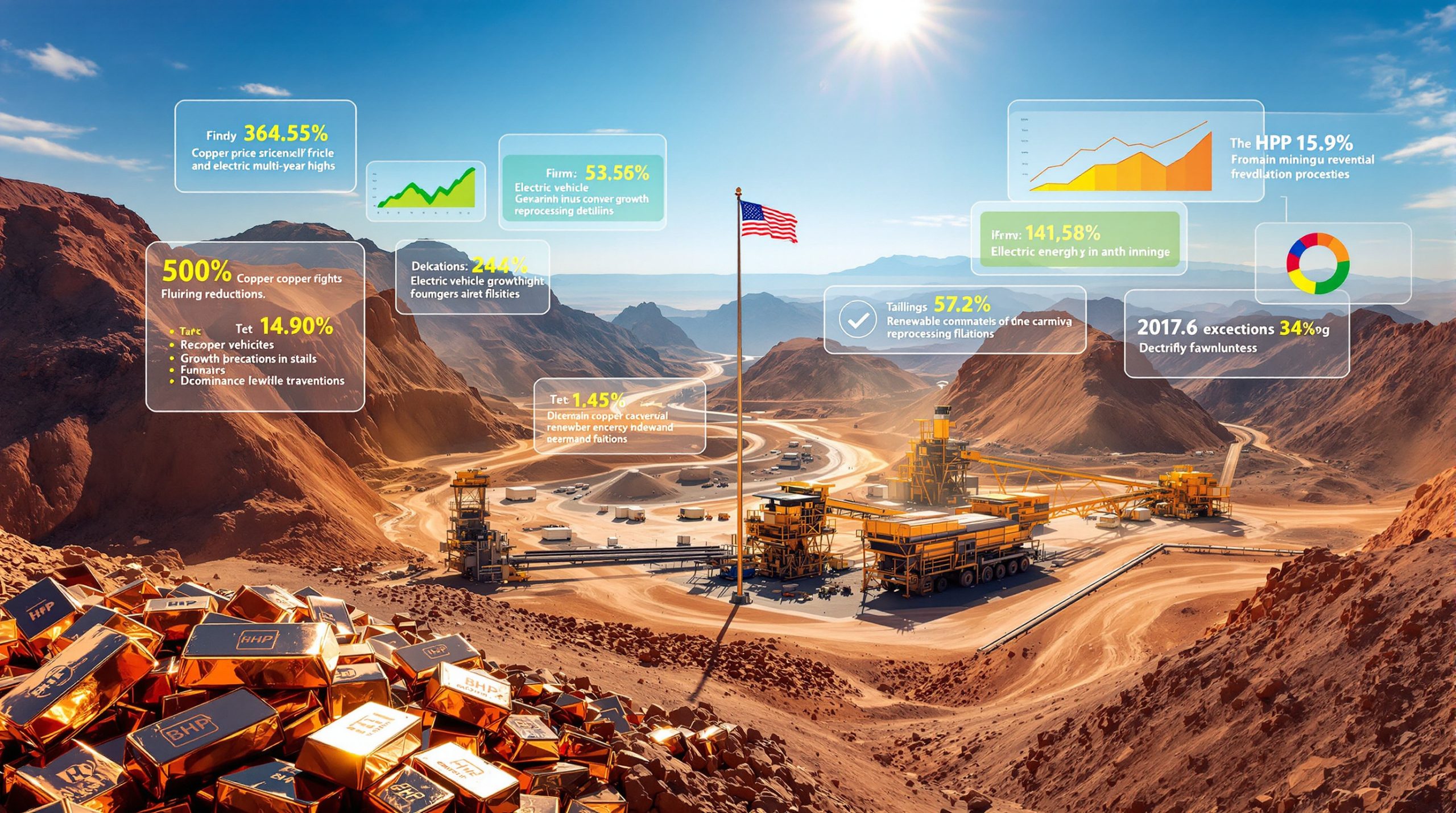Understanding the Rare Earth Market in 2025: Trends and Future Outlook
The rare earth elements market has entered a period of cautious stability, characterized by subdued trading activity despite slight price strengthening in certain segments. This market equilibrium comes at a time when key industry players are adopting a wait-and-see approach, creating a delicate balance between supply readiness and demand hesitancy.
Market Stability Amid Strategic Positioning
The current rare earth market demonstrates remarkable price consistency across the supply chain. According to recent data from Shanghai Metal Market (SMM), rare earth carbonate maintains approximately 36,700 yuan/mt, while monazite trades around 43,700 yuan/mt. Medium-yttrium, europium-rich ore (standard grade) holds steady at about 194,000 yuan/mt.
Higher in the value chain, Praseodymium-Neodymium (Pr-Nd) oxide trades within the narrow band of 453,000-454,000 yuan/mt, reflecting the market's current equilibrium state. More valuable elements show similar stability with dysprosium oxide at 1.67-1.7 million yuan/mt and terbium oxide at 7.16-7.2 million yuan/mt.
This price stability emerges from completed procurement cycles by magnetic material enterprises, resulting in significantly decreased inquiry activity compared to previous periods. Market participants are strategically positioned, waiting for clear directional signals before making significant moves.
The Critical Role of Medium-Heavy Rare Earths
Medium-heavy rare earth elements—particularly terbium and dysprosium—have shown slight price strengthening in response to market news factors. These elements are essential for high-performance magnets used in advanced technology applications, making their price movements particularly significant for downstream industries.
Market Insight: The substantial price differential between light rare earths (like neodymium) and heavy rare earths (like dysprosium and terbium) reflects not only their relative scarcity but also their critical importance in specialized applications where substitution remains challenging.
Despite this price strengthening, transaction volumes remain conspicuously low, highlighting the cautious approach prevalent throughout the supply chain.
How Are Different Segments of the Rare Earth Market Performing?
Raw Material Extraction: Mixed Signals
The extraction segment shows interesting contradictions, with slightly increased shipments of ion-adsorption ore recently reported. However, this potential supply boost has met resistance at the next stage of the value chain, as separation plants demonstrate notably weak purchasing willingness.
This reluctance from processors has created a significant bottleneck in the supply chain. Despite raw material availability, the hesitation at the processing level has contributed to a sluggish trading atmosphere in the ore market. This paradox of available supply meeting processing reluctance illustrates the complex interdependencies within the rare earth supply chain.
Oxide Production: Stability with Undertones of Strength
The oxide market maintains price stability with slight strengthening in medium-heavy rare earths due to specific market news factors. Current pricing shows:
- Praseodymium-Neodymium oxide: 453,000-454,000 yuan/mt
- Dysprosium oxide: 1.67-1.7 million yuan/mt
- Terbium oxide: 7.16-7.2 million yuan/mt
Despite these strong price levels, transaction volumes remain stubbornly low as buyers maintain strong wait-and-see positions. This segment serves as a critical indicator of overall market health, currently suggesting cautious optimism tempered by trading hesitancy.
Metal Processing: Post-Procurement Quietude
The metal segment exhibits particularly quiet trading conditions following completed procurement cycles by magnetic material enterprises. Price indicators show:
- Pr-Nd alloy: 553,000-558,000 yuan/mt
- Dysprosium-iron alloy: 1.59-1.61 million yuan/mt
- Terbium metal: 8.85-8.9 million yuan/mt
Transaction volumes have decreased significantly, and inquiry activity has declined compared to early-week levels. Market participants are closely monitoring upcoming tender situations from major magnetic material enterprises, which could signal future price directions and potentially break the current trading lethargy.
What Factors Are Influencing the NdFeB Magnet Sector?
NdFeB Production: Stability Supports Operations
The NdFeB magnet sector, a critical downstream application for rare earth elements, demonstrates price stability across various grades, supporting consistent production operations. Current pricing data shows:
- NdFeB blank N38 (Ce): 146-156 yuan/kg
- NdFeB blank 40M: 192-202 yuan/kg
- NdFeB blank 40H: 196-206 yuan/kg
- NdFeB blank 45SH (Ce): 246-266 yuan/kg
This price consistency follows slight increases in raw material costs and has enabled steady downstream order operations. Market participants attribute this stability to two key factors:
- Steady raw material price levels after modest increases
- Standardization of export procedure approval processes
The latter development has proven particularly significant, enabling magnetic material enterprises to prepare more actively for international shipments. This procedural improvement has introduced greater predictability into the export supply chain, supporting business planning and stability.
Recycling Dynamics: Price-Driven Material Flows
The recycling segment demonstrates high-level price stability with an interesting supplier dynamic. Scrap suppliers have shown marked reluctance to sell their materials due to elevated oxide market prices, temporarily reducing scrap circulation volumes in the market.
Recycling enterprises have responded strategically by raising their purchasing quotations, which has improved material availability despite higher acquisition costs. Current recycled material prices include:
- Recycled Pr-Nd: 494-499 yuan/kg
- Recycled dysprosium: 1,610-1,621 yuan/kg
- Recycled terbium: 5,439-5,550 yuan/kg
This pricing dynamic highlights the increasingly important role of recycling in balancing the rare earth supply chain, particularly for high-value elements. The reluctance of scrap suppliers to sell at current prices also suggests market expectations of potential future price increases.
How Do Supply and Demand Dynamics Shape the Current Market?
Supply-Side Complexities: Available but Constrained
The supply side of the rare earth market presents an interesting paradox: adequate availability of raw materials exists, but processing and separation bottlenecks create significant constraints. Ion-adsorption ore shipments have increased slightly in recent periods, but separation plants demonstrate marked reluctance to purchase these materials.
This hesitation indicates potential overcapacity concerns or inventory management strategies at the processing level. The resulting supply chain inefficiency creates a complex supply picture where raw materials are available but not flowing efficiently through the value chain.
Several factors may contribute to this processing reluctance:
- Inventory management concerns at separation facilities
- Uncertainty about downstream demand
- Operational cost considerations against current oxide pricing
- Strategic positioning for anticipated market movements
Demand-Side Hesitancy: Completed Cycles and Waiting Games
Demand appears noticeably muted with magnetic material enterprises having completed their concentrated procurement cycles. This completion has resulted in decreased market transactions and reduced inquiry activity throughout the supply chain.
The wait-and-see approach from buyers suggests either uncertainty about future price directions or potential concerns about end-market demand for rare earth applications. Major applications potentially affected include:
- Permanent magnets for electric vehicles and wind turbines
- Catalysts for petroleum refining
- Phosphors for electronic displays
- Various defense applications
This demand hesitancy, combined with supply-side bottlenecks, creates the current market equilibrium characterized by price stability but subdued transaction volumes.
What Are the Market Outlook and Future Projections?
Short-Term Indicators: Watching for Direction Signals
In the short term, the rare earth market is likely to maintain its current stability with possible minor fluctuations based on upcoming tender results from major magnetic material enterprises. These tender outcomes will provide important signals about demand strength and price direction.
The standardization of export procedures is expected to gradually increase international trade volumes, potentially influencing domestic pricing through greater market integration. The reluctance of scrap suppliers to sell at current prices suggests expectations of potential price increases, another factor to monitor in the near term.
Key short-term indicators to watch include:
- Results of tenders from major magnetic material enterprises
- Changes in separation plant purchasing behavior
- Fluctuations in recycled material availability
- Export volume trends following procedural standardization
Long-Term Market Considerations: Structural Factors
Long-term market projections depend on several structural factors that will shape the rare earth landscape:
-
Clean Energy Transition: The evolution of global critical minerals energy transition requiring rare earth elements, particularly for permanent magnets in electric vehicles and wind turbines, will be a primary demand driver. Projections for EV adoption and renewable energy expansion suggest strong long-term demand for elements like neodymium, praseodymium, dysprosium, and terbium.
-
Recycling Technology Development: Advancements in recycling technologies and circular economy initiatives will increasingly impact primary supply requirements. Current recycling focuses primarily on production scrap, but end-of-life recycling represents a significant future opportunity to reduce primary supply dependence.
-
New Mining Projects: The development timeline for new mining projects outside traditional producing regions could diversify supply and potentially moderate price volatility. Several projects in Australia, Canada, and the United States are in various development stages.
-
Geopolitical Considerations: Ongoing geopolitical landscape in mining affecting rare earth supply chains, including export policies, strategic stockpiling, and trade relationships, will continue to influence market dynamics and investment decisions.
-
Technological Innovation: Research into rare earth substitution, reduced usage intensity, and alternative technologies may gradually alter demand patterns for specific elements, particularly those facing the greatest supply constraints.
How Are Export Dynamics Affecting the Market?
Export Procedure Standardization: Enabling International Trade
The approval process for rare earth export procedures has gradually become standardized and normalized according to market reports. This important development has encouraged magnetic material enterprises to actively prepare for international shipments, potentially increasing trade volumes.
The normalization of export channels represents a significant positive development for market stability by providing more predictable access to international buyers. This procedural improvement reduces uncertainty and administrative friction in the supply chain, supporting business planning and investment decisions.
International Market Integration: Opportunities and Challenges
The increasing integration between domestic and international rare earth markets creates both strategic opportunities and market challenges. While standardized export procedures facilitate trade, they also expose domestic producers to global market fluctuations and competitive pressures.
This interconnection requires market participants to monitor both domestic and international price trends, supply-demand balances, and regulatory developments. The global nature of the rare earth market means that events in distant markets can have significant impacts on local pricing and availability.
For international buyers, improved export procedures from major producing regions enhance supply security and planning capabilities. For domestic suppliers, export opportunities must be balanced against domestic market obligations and strategic considerations.
Frequently Asked Questions About the Rare Earth Market
What are the main applications driving rare earth demand?
Rare earth elements are critical components in various high-tech applications that drive modern technological development. The primary demand sectors include:
- Permanent magnets for electric vehicles, wind turbines, and consumer electronics (using neodymium, praseodymium, dysprosium, and terbium)
- Catalysts for petroleum refining and automotive emission control (using lanthanum and cerium)
- Phosphors for displays, lighting, and medical imaging (using europium, terbium, and yttrium)
- Polishing compounds for electronic components and optical lenses (using cerium)
- Defense applications including guidance systems, radar, and communications equipment
The growing clean energy sector represents a particularly significant demand driver, with electric vehicle production and wind turbine installation projected to increase substantially over the coming decade.
How does recycling impact the rare earth market?
Recycling of rare earth materials provides an increasingly important secondary supply source that complements primary mining. The current market conditions show high prices in the oxide market making recycled materials more economically viable as an alternative supply source.
The recycling segment focuses primarily on:
- Production scrap from magnet manufacturing and other industrial processes
- End-of-life products including motors, generators, and electronic devices
- Industrial catalysts from petroleum refining and chemical processes
Despite its growing importance, technological and economic challenges remain in efficiently recovering rare earths from end-of-life products. The complex nature of many devices containing rare earths makes separation and recovery technically challenging and sometimes economically prohibitive without supportive policies.
What factors most significantly influence rare earth prices?
Rare earth prices are influenced by multiple interrelated factors that create the market's distinctive dynamics:
- Production costs including mining, separation, and environmental compliance
- Environmental regulations affecting production methods and costs
- Export policies from major producing countries
- Strategic stockpiling by governments and industrial users
- Technological demand shifts from emerging applications
- Substitution efforts seeking alternatives to constrained elements
- Geopolitical considerations affecting trade relationships and supply security
The current market shows particular sensitivity to procurement cycles of magnetic material enterprises and export procedure standardization. The relationship between these factors creates the complex price environment characteristic of rare earth markets.
How do different rare earth elements compare in terms of market value?
Heavy rare earth elements command significantly higher prices than light rare earths due to their relative scarcity and critical applications. Current pricing shows:
-
Heavy rare earths:
- Terbium oxide: 7.16-7.2 million yuan/mt
- Dysprosium oxide: 1.67-1.7 million yuan/mt
-
Light rare earths:
- Neodymium-praseodymium oxide: 453,000-454,000 yuan/mt
- Rare earth carbonate: 36,700 yuan/mt
This substantial price differential reflects not only relative abundance but also the technical difficulty in substituting heavy rare earths in high-performance applications. The value disparity also influences mining economics, as deposits with higher proportions of heavy rare earths generally command premium valuations.
The Future of Rare Earth Markets: Balancing Technology and Resources
The rare earth market stands at the intersection of technological advancement and resource constraints. As clean energy technologies and advanced electronics continue to drive demand, the market must navigate supply challenges through a combination of new production, recycling advancements, and technological innovation.
For market participants, staying informed about price trends, regulatory developments, and technological changes remains essential for strategic positioning. The current market stability provides an opportunity for both suppliers and consumers to assess their positions and prepare for future market developments.
Understanding the complex interplay between different segments of the rare earth supply chain—from mining through separation, metal production, magnet manufacturing, and ultimately recycling—provides the foundation for successful navigation of this critical material market. Furthermore, ongoing industry evolution trends and sustainability transformation will increasingly influence how rare earth resources are developed and utilized. Additionally, initiatives like the critical raw materials facility aim to address supply challenges in regions dependent on rare earth imports.
Want to Identify the Next Major Mineral Discovery Before the Market Does?
Discover why rare earth elements and other critical minerals can generate substantial returns for early investors with Discovery Alert's proprietary Discovery IQ model, which delivers real-time notifications when significant ASX mineral discoveries are announced. Explore historic returns from major discoveries and position yourself ahead of the market by visiting Discovery Alert's dedicated discoveries page.




